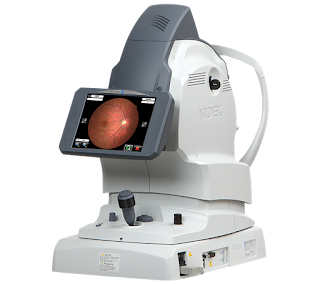Unveiling the Power of Precision Imaging: The Heidelberg Spectralis
In the
realm of ophthalmology, the ability to visualize and assess ocular structures
with precision is paramount for accurate diagnosis and effective management of
eye conditions. Enter the Heidelberg Spectralis, a cutting-edge imaging system
that has revolutionized retinal imaging and diagnosis. This article delves into
the significance of the Heidelberg Spectralis, exploring its features,
benefits, and impact on modern eye care practices.
Understanding
the Heidelberg Spectralis:
The Heidelberg Spectralis is an advanced
imaging platform designed to capture high-resolution, cross-sectional images of
the retina, optic nerve, and anterior segment of the eye. Utilizing spectral
domain optical coherence tomography (SD-OCT) technology, this device offers
unparalleled visualization of ocular structures with micron-level resolution
and depth.
Key
Features and Functionality:
At the core
of the Heidelberg Spectralis lies its sophisticated imaging capabilities, which
include multiple modalities such as SD-OCT, confocal scanning laser
ophthalmoscopy (cSLO), and fundus autofluorescence (FAF) imaging. This
integration of modalities allows for comprehensive assessment of retinal
morphology, function, and pathology, enabling clinicians to obtain detailed
insights into various ocular conditions.
Advantages
for Practitioners:
For eye
care professionals, the Heidelberg Spectralis offers numerous advantages. Its
ability to capture high-quality images in a non-invasive manner facilitates
early detection and monitoring of retinal diseases, including age-related
macular degeneration, diabetic retinopathy, and glaucoma. Moreover, the
device's intuitive software and customizable imaging protocols enhance workflow
efficiency, enabling clinicians to make informed decisions regarding patient
management and treatment strategies.
Empowering
Patient Care:
From the
patient's perspective, the introduction of the Heidelberg Spectralis
signifies a significant advancement in eye care technology. Its non-invasive
imaging procedures and quick scan times ensure a comfortable and efficient
experience during retinal evaluations. Furthermore, by enabling early detection
and monitoring of ocular pathology, this technology offers the promise of
preserving vision and improving long-term outcomes for patients.
Applications
Across Ophthalmic Subspecialties:
The
versatility of the Heidelberg Spectralis extends beyond retinal imaging,
encompassing a wide range of ophthalmic subspecialties. In the field of
glaucoma, for example, the device's ability to assess optic nerve head
morphology and retinal nerve fiber layer thickness aids in the diagnosis and
management of this sight-threatening condition. Similarly, in corneal imaging,
the device's anterior segment module provides detailed visualization of corneal
layers and pathology, facilitating accurate diagnosis and treatment planning
for conditions such as keratoconus and corneal dystrophies.
Challenges
and Future Directions:
Despite its
remarkable capabilities, the integration of the Heidelberg Spectralis into
clinical practice may pose certain challenges, including cost considerations
and training requirements. However, ongoing advancements in technology and
increased accessibility are poised to overcome these obstacles, paving the way
for broader adoption and utilization of this transformative imaging platform in
the years to come.
Conclusion:
In
conclusion, the Heidelberg Spectralis represents
a paradigm shift in the field of retinal imaging and diagnosis, offering
clinicians unprecedented insights into ocular structures and pathology. With
its advanced imaging modalities, user-friendly interface, and precise
measurement capabilities, this device empowers eye care professionals to
deliver personalized and effective patient care.




Comments
Post a Comment